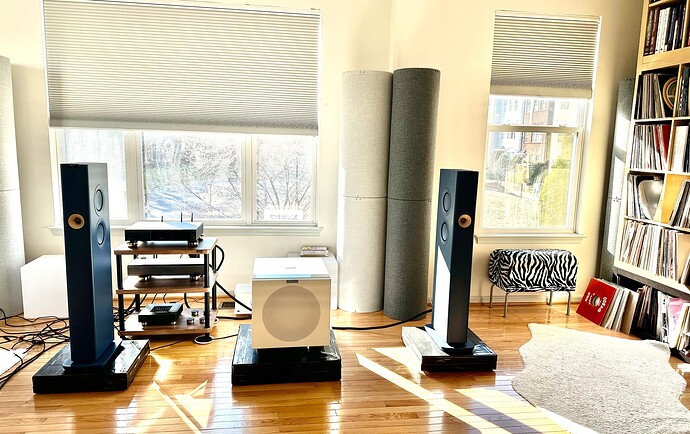@Snook you have a point when it comes to ambience, imaging and structure-borne vibrations in headphone reproduction. These aspects are suboptimal by the nature and you have to accept it if you want to listen to headphones.
I personally do not find it awful, and there are ways to adjust timbre, choosing the right headphones for your personal HRTF and alike.
Front imaging can actually be very good with loudspeakers properly set up in a listening room, and a plausible acoustic image of a symphony orchestra is possible. To get an idea how the room reverb sounds, two-channel stereo is not sufficient, but with surround or immersive formats it can get actually pretty plausible or ´realistic´.
Rock is a different thing as close-miking and mixing electronically is essential to the typical mix style of such music. It is not aimed at sounding ´natural´ or reproducing a soundfield which had once existed. And in most cases mixing engineers will do the final mix in the studio on loudspeakers, not headphones. This might be different with electronic music or anything that is originating typically from a semi-pro recording environment, like Techno, but I do not feel the differences between headphones and loudspeakers to be drastic with such styles.
Tbh I do not see this drastic range of recording quality many audiophiles are talking about. yes, there might be a vast range of styles, personal tastes when it comes to mixing different genres, and I do not have to like everything. But on a very good system which is linear and well-integrated in the room, the percentage of recordings really sounding awful is surprisingly low. Even music which was either subject to the overuse of electronic effects or recorded under suboptimal conditions or meant for clubs, not hi-fi.
People complaining about ´awful recordings´ or ´sonic garbage´ seemingly have very suboptimal listening conditions in many cases, so only a very limited number of ´audiophile´ recordings will not sound annoying. That is a pattern I have noticed over and over again.
Have recently to a hi-fi show with lots of ´non-audiophile´ people, and it made me grin every time I heard New Order, Madonna, AC/DC or Depeche Mode coming from a room. It sounded actually pretty fun, and brought me to the conclusion that there are more people out there who see hi-fi as a simple way to have fun with their own preferred music.
All that is true to loudspeakers and headphones alike.

